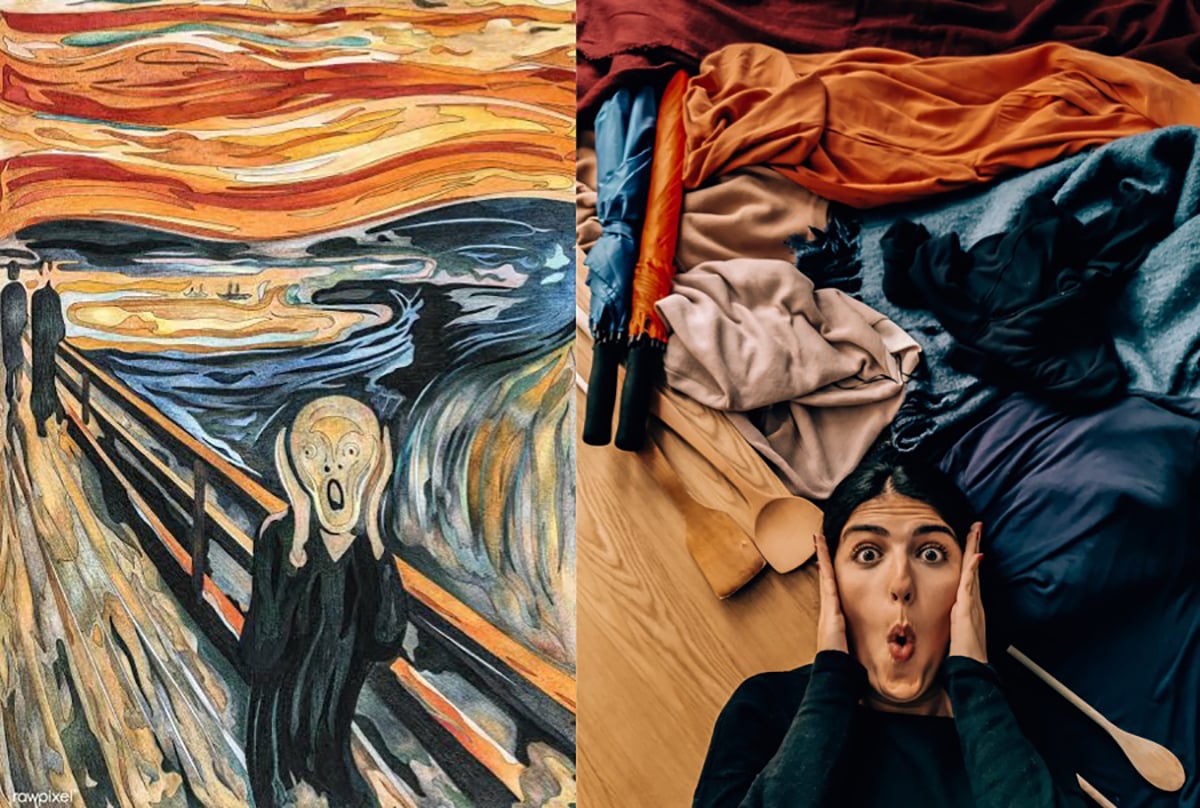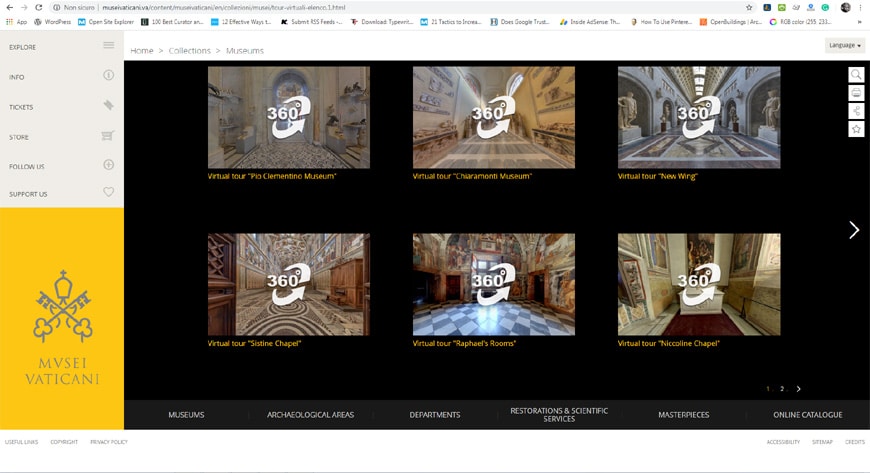MUSEUMS DURING LOCKDOWN

After more than one year struggling under the different waves and varieties of Covid, everyone is certain about how this situation has affected and will affect our lives in many ways. Museums are not exempted of the reach of this disease and the difficulties that it carries with.
According to UNESCO, since the beginning of the Pandemic, almost all museums around the world have been temporarily closed. The reliance on tourism has affected them mostly financially, which also has an impact on the exhibitions that can be planned. Seen this, museums have been quick to react to the situation by offering different ways to enjoy their collections – some of which are much more accessible than those offered before the pandemic. ICOM went deep into this and pointed out in a 2020 report that museums have increased their online activity around a solid 15%.
This post will give an overview of these activities, following the very interesting and useful research of Chiara Zuanni, assistant professor in digital humanities at the Centre for Information Modelling at the University of Graz. The result of her research can be consulted in both an Europeana portal and in a map that gathers all the different online activities that museums have followed during the last months in order to face this health emergency panorama. It is still possible to collaborate with the configuration of this map by sharing information about online activities carried out by museums.

Regarding the different activities and tasks that museums engaged during the harshest moments of lockdown, we find two main initiatives:
On the one hand, there is maintenance of the museum’s facilities and collections. The focus here was set on the conservation, restoration and digitalization of the pieces and documents found both in display and in the archives. This digitalization makes the museums’ heritage more accessible and also supports other outreach and research work. This BBC article, written by Francesca Gillet, sheds light on these “secret life of museums during lockdown”, focusing on museums and galleries in London.
On the other hand, we find a more active online engagement, promoting “a broad range of digital projects and activities” to support “access to cultural heritage and maintain a relationship with their audiences” (Zuanni, 2020). The interesting fact of these activities is that not only the average museums’ audience participated, but also they were followed by a new and curious audiences staying at home. How was this possible? We have to thank social media.
Through different hashtags, challenges and streaming cultural content online, to TikToks and video games (Nintendo’s franchise Animal Crossing added works of art from many art institutions like the Getty Museum and the Metropolitan Museum of Art), museums have become part of our everyday life, filling our homes with art and culture.
Discussing the map resulting from Chiara Zuanni’s research displays several elements: Contemporary Collecting (appealing to memories and experiences of the pandemic), Social Media Projects, Virtual Tours, Online Exhibitions, Games, Educational Content, Tweets, and Other Activities.
Here we’ll provide some interesting examples.
Starting with Social Media Projects, the most fun of them have been those encouraging audiences to reinterpret pieces displayed on museums with whatever they found on hand. The hashtags #gettymuseumchallenge and #tussenkunstenquarantine inspired other institutions to present their challenges and so welcome and share their audience’s creativity. Other hashtags like #ClosedButActive were mostly used on Twitter in order to give peeks of their collection and activities to the online community. An interesting reading on this initiative was #MuseumAlphabet, which encouraged all kinds of museums and institutions to name a piece, author, or curiosity about their collections after each letter of the alphabet. All of these hashtags were used on Instagram, Facebook and Twitter.

However, when it comes to streaming content, the bigger museums shined with their virtual visits. Museums such as the Musei Vaticani (Rome), the Louvre (Paris), the MoMA (New York), the Victoria and Albert Museum (London), and the Museo Thyssen-Bornemisza (Madrid) are just a few examples of institutions that have undertaken a huge task of digitalization and video editing so that anyone can visit them from their living room. To find out more, the New York Times reported several examples of museums and historical places offering online tours all around the globe. You can read the article here.

Not only pre-existent museums were offering digital tours and activities. Regarding Contemporary Collecting, some museums have launched campaigns to create and curate exhibitions based on the memories and testimonies of people during the pandemic, and even new museums have appeared. Frankfurt Historisches Museum and Wien Museum (Viena) offer good examples of exhibitions that are to be curated and completed through the audience’s participation, and initiatives like Minnen (together with the Nordic Museum in Sweden) or The Covid Art Museum reflect the creativity and reception of the lockdown within the social imaginary, compiling elements ranging from texts and photographs to memes.
In conclusion, and according to what Martin Bailey wrote in The Art Newspaper: “Covid have changed in long terms conditions how we are visiting museums and how we will visit them in the future”. This not only affects the physicality of the museum experience, but has also underlined other elementary needs within the planning of exhibitions and museum activities, as well as raised new questions. After seeing the positive impact of online activities in museums’ websites, it is clear that a good digitalization process is fundamental for museums not to fall in ostracisms. But it is also questionable how, despite of the fact that these online activities have make more people aware of what museums are doing and how important they are to enrich the social fabric, there is also a part of population that cannot access internet and therefore are excluded of any cultural itinerary or initiative. Online engagement have make a huge impact on the museums’ race for accessibility, but we should keep our eyes open to everything what is happening in our society if we really want to be museums for all.